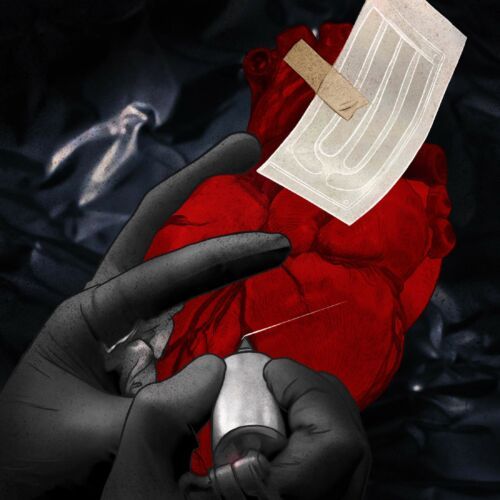A “tattoo” for your heart made from graphene and “cyborg cells” in medicine
Researchers at Northwestern University have developed a graphene “tattoo” that can treat an abnormally low heart rate. It was proved by experiments on rats when such an electronic “tattoo” was glued to their central organ of the circulatory system. The device acts as a pacemaker, delivering electrical signals that keep the heart working properly. Combining electronics with the heart’s soft, pulsating tissues was the greatest challenge. A human version of the device could be ready in five years.
Researchers at the University of California implanted an artificial hydrogel scaffold into E. coli bacteria to create semi-synthetic “cyborg cells”. In addition to making the cells more challenging, this scaffolding eliminates their ability to reproduce, making them better controllable than living genetically modified bacteria. In the future, “cyborg cells” could be used as small robots in medicine, environmental cleaning and industrial production.
Is it worth examining dirty baby diapers? Thanks to the work of an international team of scientists from The University of Copenhagen, information on 10,000 previously unknown viruses found in the faeces of infants and the most accurate data yet on the composition of the gut microbiome of newborn children was collected. The viruses identified in used diapers were ten times more numerous than the bacterial species identified there. 90% of viruses are harmless bacteriophages that attack bacteria instead of human cells.























